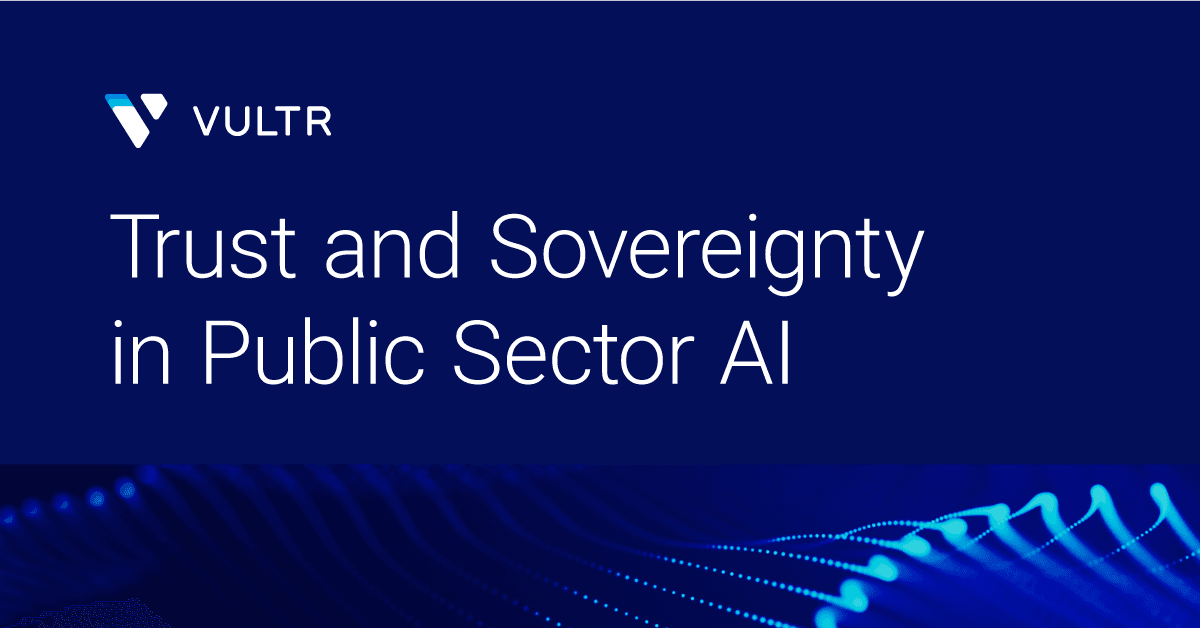In the AI era, governments have an extraordinary opportunity to improve lives – from streamlining public benefits administration to modernizing infrastructure and healthcare. But with that opportunity comes a hard truth: AI won’t just be judged by what it can do but by how much people trust it.
Trust is essential for public sector innovation. Agencies must ensure that modernization efforts are effective, secure, compliant, and aligned with public expectations. That means embedding sovereignty, privacy, and control into the very infrastructure where AI systems are built and deployed.
AI may drive transformation, but sovereign cloud ensures that transformation is secure, compliant, and accountable. This is the foundation for sovereign AI, where national values and public interests are built into the infrastructure, not added as an afterthought.
That’s why our new strategic guide, “Sovereign Cloud for Public Sector – Ensuring Security and Compliance in the AI Age,” is designed to help public sector leaders align innovation with trust. It explores how government agencies can future-proof their AI strategies with secure, compliant, and sovereign infrastructure.
Why trust must be engineered into AI from the start
“Data sovereignty is a cornerstone of trust and security in the digital age. Government agencies must know that they retain full ownership and control of their data, no matter where it's stored or processed. Ensuring sensitive information is managed securely and in compliance with local regulations is essential to building confidence in digital services.” – J.J. Kardwell, CEO, Vultr
Citizens are increasingly concerned about how their data is used, who has access to it, and whether decisions made by machines can be explained or challenged. Many AI initiatives in the public sector still rely on traditional cloud platforms – often hosted abroad and governed by foreign laws – which raises fundamental questions about control and compliance.
For instance, European firms have expressed concerns about their dependence on U.S.-based hyperscale cloud providers, prompting a reevaluation of their cloud strategies to prioritize digital sovereignty. This reliance can lead to challenges in maintaining data sovereignty, ensuring compliance with local regulations, and retaining control over critical operations.
To meet rising expectations and avoid regulatory and reputational risk, public sector agencies need a new approach that embeds governance, transparency, and accountability into every layer of their AI infrastructure.
Building trusted public sector AI infrastructure with sovereign cloud
Sovereign cloud is the architectural foundation for trusted government AI applications. It’s not just about where data is stored – it’s about how infrastructure is designed to support local control, enforce compliance, and embed governance from the ground up.
At its core, sovereign cloud infrastructure is defined by:
- In-country infrastructure and network isolation to ensure jurisdictional control and reduce exposure to foreign influence.
- Modular, composable architecture that enables secure orchestration across workloads while maintaining strict governance boundaries.
- Built-in support for AI governance through audit trails, logging, and policy enforcement at the infrastructure level, not just at the application layer.
- High-performance, silicon-diverse compute environments designed to support large-scale AI model training and inference without external dependencies.
This setup allows public sector agencies to process highly sensitive information – such as internal memos, health records, or national defense data – within their own borders, under their own laws, and in compliance with the latest regulatory standards. It also creates the conditions for activating previously untapped "dark data" in a secure, explainable, and auditable way.
By starting with infrastructure designed for sovereignty, government agencies can support AI systems that are both effective and trustworthy, offering a solid foundation for responsible, future-ready innovation.
How to choose a sovereign cloud vendor for government AI
Not all sovereign cloud offerings are created equal. As you evaluate providers, look for infrastructure and service capabilities that meet the technical and operational demands of modern AI deployments in the public sector. Here are three key criteria to prioritize:
- In-country infrastructure and local data residency: The provider should maintain physically isolated data centers within national or regional borders, offer geo-fenced data management policies, and provide guarantees that no data will be transferred or processed outside jurisdictional boundaries without explicit consent.
- Compliance-ready architecture aligned with evolving regulations: Look for providers that support a full range of certifications and frameworks, including ISO 27001, SOC 2 Type II, NIST 800-53, GDPR, HIPAA, and emerging AI-specific mandates like the EU AI Act. This includes granular access controls, encryption at rest and in transit, retention policies, and support for auditability.
- Native AI capabilities: The platform should offer GPU-accelerated environments, pre-integrated machine learning pipelines, scalable inference tools, and features like version control, model lineage, and explainability support to meet governance requirements across the AI lifecycle.
The full guide expands on these and other criteria to help agencies build a roadmap for secure, scalable AI adoption. Explore how government agencies can future-proof their AI strategies with our new strategic guide, “Sovereign Cloud for Public Sector – Ensuring Security and Compliance in the AI Age.”

